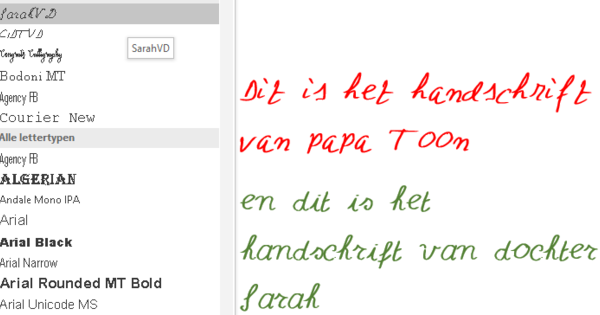With the holidays over, it's not unlikely that you'll want to use iMovie to put together videos of family and friends. That's why we'll show you how to create a new project in iMovie, how to edit the videos, and how to make the final product accessible to everyone.
Create a video and add clips
Broadly speaking, with iMovie 10 you can create two types of projects: a movie or a trailer. Here we want to make a video. To do that, choose File > New Movie or press Command-N. A Create window with the themes of iMovie will appear. I will discuss themes in a next lesson. Choose for the time being No Theme, Press the button Create at the bottom of the window, and give your video a name.

We'll let stills sit for now, and look instead at adding video clips to your movie's timeline. Select an event in the libraries panel, and all clips associated with that event appear in the Browser panel on the right. You can add clips in several ways. To add a full clip, click on the clip and press X on your keyboard. Click on the plus (+) button that appears when you hover your cursor over the clip, and it's added to the timeline below. Alternatively, you can click the E press your keyboard to add the selected clip. Or if you prefer to do it the old-fashioned way, you can drag the selected clip into the timeline.
Instead, if you simply click in a clip and then add it, the 4 seconds after the selection will be added to the timeline. To add a specific part of a clip, click and drag over the part of the clip you want to add and press the E button, click on the Plus button, or drag the clip to the timeline. Keep doing this until you're done.

As I mentioned, you can also add still clips. This is best done by iPhoto Library to select in the libraries panel and in the pop-up menu located in the top left corner of the Browser panel appears to choose an image rating - Events, faces, Places, Albums, facebook, flickr, or Smart Albums. Search for your desired image and drag it to the timeline.
When you do this and play the clip, you will see that the program has added a Ken Burns pan-and-scan effect. I myself have seen this effect far too often. You can remove it by double clicking on the image, on the crop tool used in the viewer panel appears and clicking the fit button in the top left corner of the image. Or you can click crop click and choose the part of the image you want in the video. (Note: The cropping is limited by the aspect ratio of your movie's frame - 16:9 for movies coming from HD clips, for example.)

iMovie does not have to apply a Ken Burns effect to all still images. To adjust how still images are handled, click in the viewer panel and choose Window > Movie Properties (Command-J). Click on the Settings button at the top right of this panel and click the Photo Placement pop-up menu on the left. You will see that you are next to Ken Burns also fit or crop can choose.
Edit clips easily
In later lessons, I'll go deeper into editing. The following tips are for people who just want to know some basic steps.
Rearrange clips: To move a clip or image to a new location, click and drag it to the desired location.
To shorten or lengthen clips: When you first make a selection in the Browser panel, the selection may not be as precise as you would have liked. That is easy to correct. Just click on one of the edges of the clip and drag it towards the center of the clip to shorten it, or away from the center to lengthen it. If you take part of a longer clip from the Browser panel, you can make it as long as the full length of the original clip. (Obviously, if you've already imported the entire clip, you can't make it longer.) You can frame still images as long or as short as you want by dragging the edges.
Shorten or lengthen audio: Let's say you have a clip in the timeline that contains audio. Furthermore, let's say you want that clip's audio to play longer than the edited clip's video — for example, you want it to play over the beginning of the next clip. You can do this by separating the audio track from the video. Choose Modify > Detach Audio (Command-Option-B). If you separate audio from video, you can edit the clips separately, for example to remove a cough in the audio track.
Add transitions
Video transitions serve as a transition from one clip to another. Common transitions are blurs and clips that dissolve into each other. Less used (and a bit garish) are rotations, mosaics, and turning pages. Transitions help to emphasize the passage of time or the transition from one subject to another. (Or sometimes they're just a way to give the viewer a smoother transition to the next clip.)
To add transitions to your movie, select Transitions underneath the head Content Library (or press Command-1). It Browser panel now shows all of iMovie's built-in transitions. Select the transition you want to use and drag it to the beginning or end of a clip. By default, inserted transitions last half a second, but you can adjust that length by selecting the transition and entering a new length in the field to the right of the Transitions pop-up menu in the top left corner of the Viewer.
As I mentioned earlier, there are flavorful and less flavorful transitions. In general, replacements and solutions look the most slick. However, when you apply types of transitions that were used professionally on television in the 1970s, you get a video that looks very amateurish.
Add titles
A title at the beginning of your video can provide extra refinement. To do that, select Titles underneath the head Content Library (or press Command-2). iMovie's titles will then appear in the Browser panel appear. If you've applied a theme to your movie, titles for that theme will appear in the title section. Below that, you'll see iMovie's default collection of titles.
To add a title, all you have to do is drag it where you want it - at the beginning or end of your movie, for example. Select the title in the timeline and you will see a placeholder text; double click it to enter your own title. To adjust the font, size, alignment and formatting, click the Adjust button at the top of the iMovie window. Options will then appear to adjust the attributes of the title.
Nothing prevents you from inserting the titles between clips, other than good taste. It's not a bad idea if you want to introduce the viewer to a new location or if you want to indicate the passage of time ("Three weeks later..." for example). But you probably don't want to show a new title every time the dog comes into view. (Unless you really love your dog, or really hate the people who are going to watch your video.)

